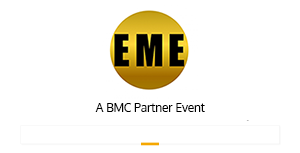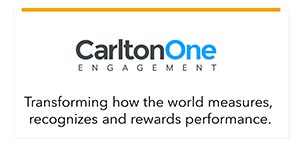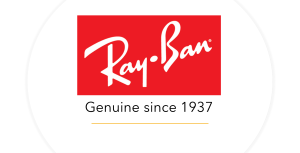Demystifying Incentive and Recognition Pricing Through Pay for Performance
By Mary Anne Comotto
Comotto is President of 74-year old Partners for Incentives, Cleveland.
The Elements of IRR Value Creation
Today’s Most Prevalent Business Models
The Pay for Performance Model
Click here for EEA sponsors; here to subscribe, and here for an RRN media kit.
Comotto is President of 74-year old Partners for Incentives, Cleveland. 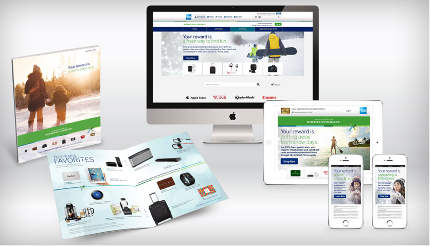
Complicated pricing is almost always a red flag. Organizations have a right to make money, but those unsure of the tangible value created for customers or who wish to disguise profit margins often resort to complex pricing plans or misleading claims that make it difficult for anyone to clearly decipher what they pay for incentive, rewards, and recognition programs.
For instance, some recognition and incentive companies advertise no markups on rewards, when of course they make money some way through other fees.
Below is a list of the various prevalent options and why Partners for Incentives generally relies on a simple, pay-for-performance model. Clients pay for program design and results in the reward markups; technology and other support services are based on customization, bandwidth and other needs, not on a SaaS (software as a service model); hosting, maintenance, and security fees are based on requirements; and rewards are paid upon redemption to cover the cost of the reward, professional design services to enhance engagement, customer service, and fulfillment.
Comotto says her company has stuck with the pay-for-performance model for decades while different incentive and recognition platforms have come and gone.
The Elements of IRR Value Creation
Before outlining the various pricing schemes in the market, it’s helpful to start first with how IRR firms create value. Generally speaking, clients come to companies like ours not specifically to buy recognition, incentives, or products, as those can be be purchased on Amazon, other retail sites, and gifting platforms. Rather, they come to companies like PFI for a strategy and platform that uses these techniques to help them achieve a specific purpose, goals, and objectives with sales or non-sales employees; distribution partners, customers and sometimes donors or other stakeholders. Unlike purchasing a computer, smart phone, or copier machine, which are purchased for their inherent functions, incentives, recognition, and rewards are a means to an end. They only have value if they help motivate people to achieve desired goals and leave them feeling satisfied with their efforts.
On the other hand, there is little tradition of paying for professional program design in the incentive, recognition, and loyalty program field, as there is in almost every other part of business. Clients either often feel they don’t need it, or don’t sufficiently measure the results to know if such counsel is even of value. Even though the goal is to enhance performance, some buyers will still only evaluate award costs based on whether they are higher or lower than available at retail.
When evaluating what to pay, it's important to understand the value created. Successful incentive, recognition, loyalty or related program requires the following elements:
Program design—Determination of the purpose, goals, and objectives of the effort; the anticipated results; behaviors and actions most likely to produce the desired results; the potential value to the organization in terms of financial or other impacts; identification of potential risks; the business rules, and the communications, learning, rewards and recognition, and other elements that might be required to connect engagement and capability to results.
Program implementation—How will the program be communicated, to whom, with what message, through what platforms? What training is required of who and about what? Will tests and surveys be used to gauge performance and how will those results be used? How specifically will the program be tracked and measured in terms of return on investment or impact?
Technology—Incentive, recognition, and engagement and reward technology encompass two parts: the front-end program management platform explaining the rules and supporting such as elements as communications, standing reports, social recognition, rules, how-to, and other information, and the back-end rewards redemption platform. Depending on the program, a client may choose to manage the design and implementation on their own or ask for assistance from the solution provider with all or various aspects of implementation.
Results measurement. Most incentive, reward, recognition, and loyalty programs have specific goals and objectives requiring designated actions or behaviors on the part of the participants. In most cases, results and actions are rewarded with points, badges, or some other means of recognizing behavior over time, usually redeemable for rewards in an online catalog.
Today’s Most Prevalent Business Models 
As outlined in a recent market report from TSC, formerly the Starr Conspiracy, numerous pricing models and combinations exist related to software and rewards, but the report makes no mention of the critical elements of program design and implementation or reward for performance without which the technology or rewards have little sustainable value. Ironically, while clients increasingly are focused on the results achieved by these programs, the venture capital and private equity firms backing incentive and recognition firms are focused on technology fees, with little apparent interest in the professional services required of effective program design.
Program design. For the same reason most companies resist engagement and recognition technology fees anywhere close to what they commonly pay for customer relationship management (CRM) software, almost no incentive and recognition companies we know of have developed formal professional services divisions that charge separately to support program design and measurement. Nor have they developed reseller channels such as Salesforce has accomplished in customer relationship management, in which third-parties profit from creating Salesforce technology implementation. Whatever such services any of these companies provide are buried in other fees because many clients simply refuse to pay for services they either don’t feel they need or feel they get from other incentive or recognition firms for free.
Program implementation. Many companies believe they can implement the program communications, training, and assessment on their own and therefore allocate no budget for an outside vendor for support. Those who do value assistance often refuse to pay for it because they expect the vendor to provide it, unless requests involve obvious out-of-pocket services such as graphics, promotional products, warehouse run-through promotions, or events, etc. they can justify to management.
Program management software. For software the options usually include a per-seat SaaS or flat fee model, along with a setup fee depending upon customization requirements. Technology companies struggle to get $1 per seat for employee programs, when many of those same clients pay $50 or more per seat for customer relationship management software. Others, like Partners for Incentives, charge a fee for program setup and customization based on requirements, and then charge for hosting, maintenance, security based on service level agreements.
Rewards. Today, rewards can include merchandise, travel, electronic and physical gift and e-cards, online travel booking services, and other tangible rewards, generally managed through online catalogs. Most of these companies charge basic technology customization, support, and security fees for the redemption catalogs; for points issued and/or redeemed, or product markups to cover customer service and other support requirements. With sufficient volume, those fees get waived.
Results. Because most companies are paying for results or desired behaviors, they generally pay fees when points are issued and/or redeemed. This is where pay for performance comes in.
Payment options. Pay points upon issuance and/or upon redemption. Many incentive and recognition vendors prefer to be paid upon issuance because that significantly improves cash flow. Given that many programs run annually, redemptions often don’t occur in bulk until the end of the program. This model can result in breakage, or unredeemed points, which benefit the vendor financially if they are never used unless otherwise negotiated.
For some, an alternative is to pay a portion of the fees upon issuance, since the participant achieved the desired goal, or took the desired action, and then the fees for merchandise, fulfillment and service, upon redemption. This also alleviates breakage fees. This practice, while sensible, remains rare.
Many companies require a payment in advance for points issuance and/or redemptions, either in escrow, or in the form of a credit card held to automatically handle payments to the vendor upon the payment trigger. Companies that say that there are no markups on the rewards instead make their money on the fees embedded in the advance payments, so that employees have no sense of markup on the value of their rewards when redeeming on an e-commerce site such as Amazon as they might in a traditional catalog.
The argument is that employees feel a greater sense of perceived value when they go to Amazon to redeem points for what they would pay as consumers. The counter-argument is that this is a false narrative since the rewards are gifts not paid for by the employee. In addition, large incentive and recognition firms like ours buy merchandise at significant discounts from retail so that with the exception of certain consumer electronics our prices compare favorably with retail anyway. For tax reporting purposes, Partners for Incentives can provide a separate calcuation for employees based on the fair market value of the reward that does not include PFI's consulting and support fees.
Other companies, like Partners for Incentives, have a pay-for-performance model that not only includes helping to motivate people to perform but also to make sure they enjoy their rewards; therefore, payment is upon redemption. As a result, the vendor is motivated to ensure that those who perform enjoy the rewards of their effort. Points recognition is a red flag because it indicates people aren’t truly engaged.
c
Points breakage warning. With payment upon redemption, companies pay for the points when they are issued, which commonly leaves unredeemed from 10% to 30% of points issued. This not only leaves open an area of negotiation as to who should benefit financially from the breakage, but also what happens should the vendor have financial problems. This happens almost every year somewhere in the US. If the client hasn’t yet paid for the points, there is little more than inconvenience. It can become a major financial liability if the points have already been paid for. Furthermore, if a company has no motivation to promote redemption, many employees may miss out on their rewards, which defeats part of the purpose to create long-lasting engagement.
Beware of misleading points expiration dates. Programs that require payment on issuance raise another question: when do the points expire? The answer can have a direct impact on breakage, especially if the employees aren’t clear on the expiration date. While not relevant to a pay-upon-redemption model, those paying upon issuance need to pay close attention to this. Some companies have been known to suddenly impose points deadlines without clear disclosure to the client or participants.
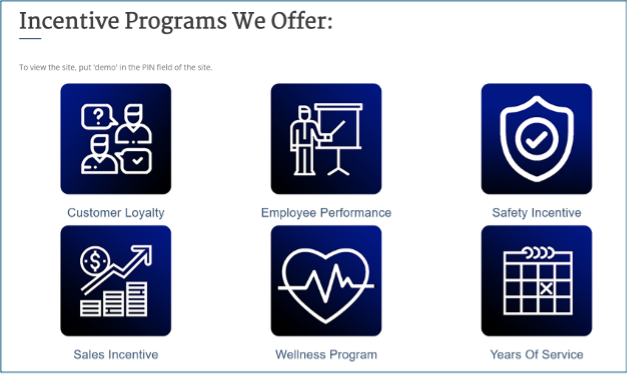
The Pay for Performance Model
As one of the oldest firms in the incentive and recognition market, Partners for Incentives relies largely on a transparent model tried and true in the marketplace for decades: pay for performance. Clients pay for the value we add in program design, implementation, technology, rewards, and results. That usually means that about 20% of the program costs are fixed in terms of program design, implementation, setup, software, rewards, and results, with the rest based on performance.
Program design. Because we only sell through promotional and related marketing partners, we understand the need for program design support, but also the difficulty human resources, sales, and marketing management would have to get management support for professional services fees in this field. To accommodate this budget challenge, our company has five full-time design and implementation managers paid for through markups on our rewards.
Program implementation. Clients who need additional support in implementation, communications, training, and other specialized requirements pay based on an agreed-upon statement of work.
Program management software. Recognizing that few if any companies wish to pay monthly per seat fees for recognition, incentive, programs, and rewards, we charge setup and monthly technology fees based on customization, feature and cybersecurity requirements, bandwidth usage, with no per-seat charges.
Rewards. Clients engage Partners for Incentives to help them achieve specific results recognized with a desirable reward experience. Therefore, we do not charge clients until both the results or desired actions have occurred, and the corresponding reward is redeemed. If we haven’t delivered both the result and the satisfied reward recipient, we haven’t fully done our job.
Results. Given that as much of 80% of our revenue per client is for performance and rewards, clients understand that the markups on the rewards enable us to provide the program support they need to succeed. If they wish to pay separately for program design, this element can be removed from markups. This model gives us the incentive to not only achieve the desired purpose, goals, and objectives of the program, but to ensure a rewarding experience for the participant. Because recipients are being rewarded in points out of the company’s funds, rather than their own pockets, there is little benefit or incentive for anyone to bother trying to translate the points into dollars. How many people come home from birthdays, weddings, or other. That said, PFI markups for professional services fees do not constitute fair market value for rewards and can be deducted for the figures used for employee tax disclosures.
Enterprise Engagement Alliance Services
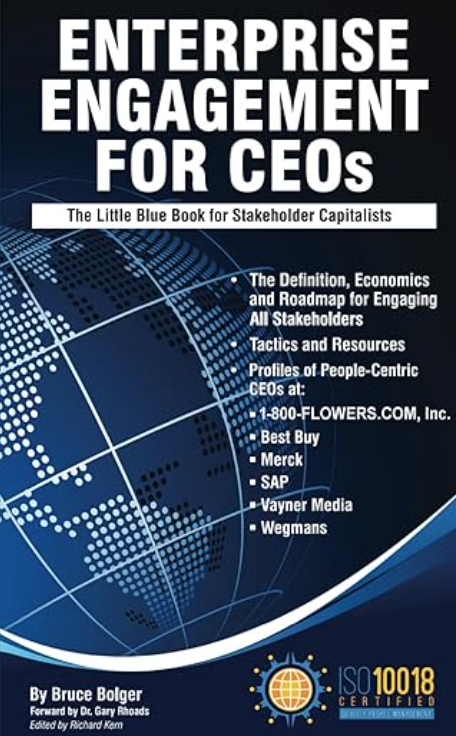
Celebrating our 15th year, the Enterprise Engagement Alliance helps organizations enhance performance through:
1. Information and marketing opportunities on stakeholder management and total rewards:
ESM Weekly on stakeholder management since 2009; click here for a media kit.
RRN Weekly on total rewards since 1996; click here for a EEA YouTube channel on enterprise engagement, human capital, and total rewards insights and how-to information since 2020.
2. Learning: Purpose Leadership and Stakeholder
 Management Academy to enhance future equity value and performance for your organization.
Management Academy to enhance future equity value and performance for your organization.3. Books on implementation: Enterprise Engagement for CEOs and Enterprise Engagement: The Roadmap.
4. Advisory services and research: Strategic guidance, learning and certification on stakeholder management, measurement, metrics, and corporate sustainability reporting.
5. Permission-based targeted business development to identify and build relationships with the people most likely to buy.
6. Public speaking and meeting facilitation on stakeholder management. The world’s leading speakers on all aspects of stakeholder management across the enterprise.





